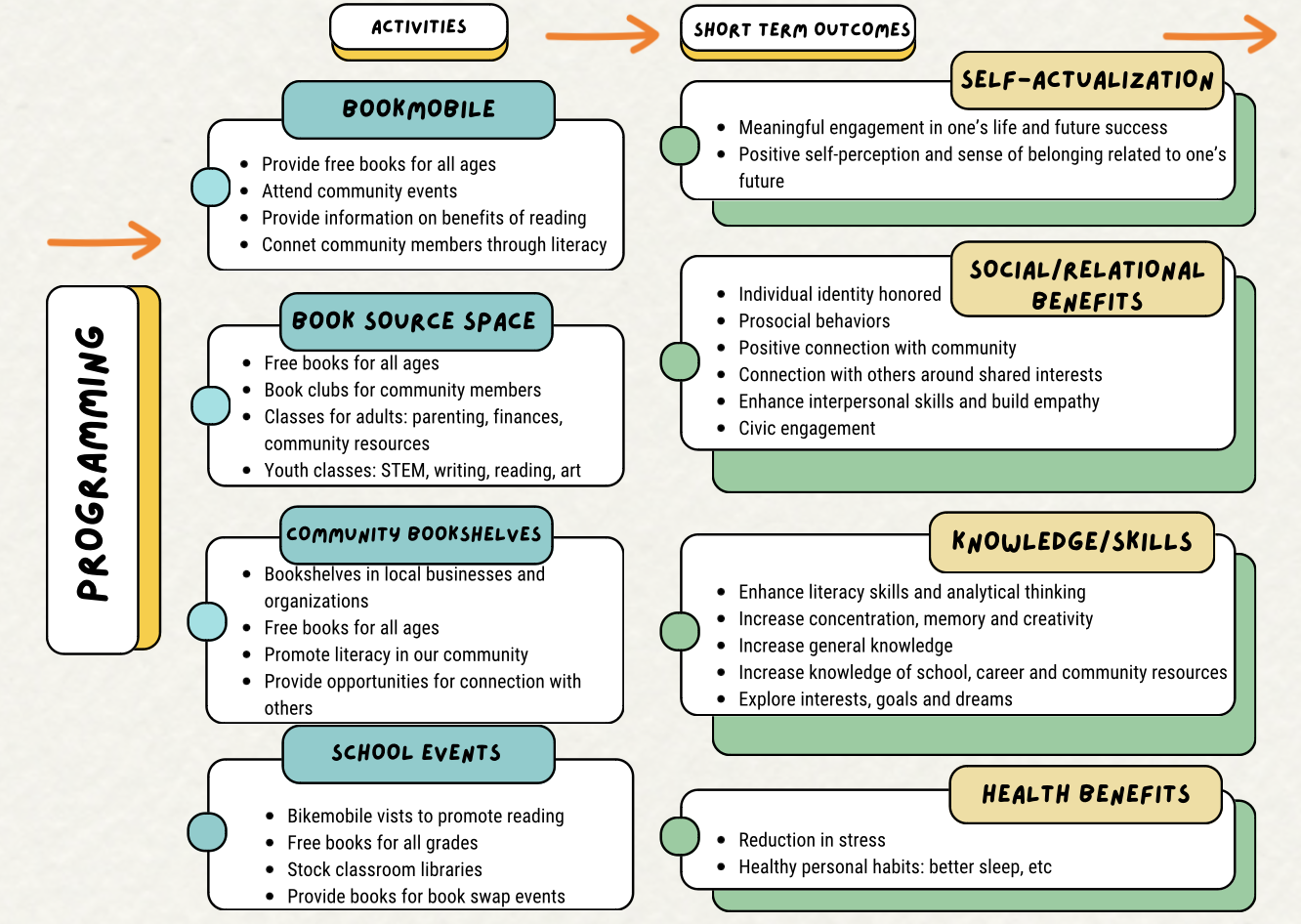Let’s Get Started!
What is a logic model and theory of change?
We discovered that by clearly mapping out our organization we
Received more funding
2. Retained more staff and volunteers
3. And had a lot more fun!
Which resulted in us having a greater impact for the people we served.
The 2 most impactful foundational systems are
Logic models & Theory of change models.
They lead to an increase in the following three areas.
Never heard of them? Follow the steps below to get started and make a plan!
Funding
To receive funding from grants, foundations, and private donors an organization must clearly show what they do, how they do it and what are the outcomes.
Sustainability
Can your organization function without you?
When all aspects of an organization are mapped out in a clear way then the following pieces can ensure long-term viability.
Effectiveness
When a pathway to achieve outcomes is clearly established then everyone is working towards the same goal.
STEP 1: LOGIC MODEL
Watch a one minute video to learn about the power of logic models!
At its core, a logic model is a concise summary of a program's purpose, actions, and goals on a single page. It helps connect the resources used, the activities and results, the people involved, and the desired achievements or changes you hope to see.
This research highlights why your organization needs a logic model sooner than later.
In summary, it says:
It spurs success
It saves time and money
It helps raise money
It’s the foundation of evaluation efforts
It’s a sign of high-performance
Get started by grabbing our checklist and template or if you want step by step support, sign up for our logic model course that starts in April 2024!
STEP 2: THEORY OF CHANGE
A theory of change, is a way to plan and understand how one can create a positive impact. It's like a roadmap that helps an organization achieve their goals and make a difference in the world.
Many requests for proposals, grant applications and other funding sources are now requiring the submission of a theory of change with an application. There are many different types of theory of change models. For nonprofits, you want one that clearly demonstrates the following components:
Components of the program’s foundations
Delivery: What actions or interventions are happening
Short term Impact:
Positive life skill development and protective factor enhancement: What changes will be seen immediately during the program?
Reduction of negative behaviors and Risk factor avoidance
Intermediate length Impact:
Changes in positive functioning skills: What changes will be seen 3-6 months after involvement?
Reduction in adaptive difficulties: What changes will be sustained and can be applied on a regular basis which in turn decrease unwanted behaviors?
Long term impact: Successful Self-Actualization
What changes will carryon years after involvement?
A theory of change clearly shows your investors, funders and stakeholders exactly why your organization is necessary, what you will do and the impact it will have.
This is exactly what they want to know!
Example of a theory of change model
Appeal to funders Show your outcomes Highlight your impact Increase trust with your stakeholders Engage your community
Story Orchard’s Theory of Change
I want to create one of these for my org!
Learn how here









